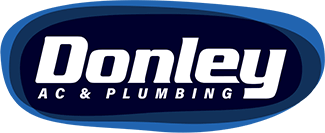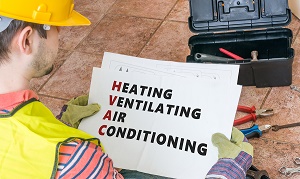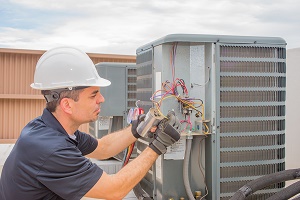How to Avoid A Commercial AC Repair Nightmare
Date: March 15, 2017
ARTICLES
HOW TO AVOID A COMMERCIAL AC REPAIR NIGHTMARE
MAR 14, 2017
HVAC PREVENTATIVE MAINTENANCE CHECKLIST
Set it and forget it…hmmm, no. The old adage isn’t true, at least when it comes to your heating and cooling. An HVAC unit needs regular maintenance to ensure that it is working properly. Over a year’s time, your unit could have a wire come loose, dust and grime get into the filter, roof rats chew at the cables (yes, we’ve seen it), and more. Each of these can cause your unit to work at a sub-par level which means the unit is working harder, but not cooling or heating as well as it could. In the end, that causes your utility bill to slowing tick upwards. Instead, consistently scheduled maintenance regulates the function of your unit. Small issues are addressed before they become costly repairs and the unit is cleaned to maintain optimum performance. Some of the upkeep can be done in-house, while other tasks should be left to your trusted HVAC installation technician.
WHEN IS A GOOD TIME FOR COMMERCIAL HVAC MAINTENANCE?
- If you have a system that both heats and cools, you’ll want to schedule maintenance in the Spring and Fall. In Arizona, this would be March, April, or May (Spring) and September, October (Fall). This is the most common type in Arizona.
- Some commercial spaces have separate heating and cooling units if this applies to your company:
- Perform maintenance on the on the cooling system once per year before the cooling season (typically March, April, or May).
- Perform maintenance on the furnace once per year before the heating season (typically September, October or early November).
A QUALITY HVAC MAINTENANCE VISIT FOR OUTDOOR UNITS
Whether you have an in-house team that maintains your HVAC or you hire an outside company to do so, be sure that the following things occur:
- Clean dirt, leaves, and debris from inside the cabinet
- Inspect coil and cabinet – clean as needed
- Inspect fan motor and fan blades for wear and damage – on older models lubricate as needed
- Inspect unit for proper refrigerant level and adjust if necessary
- Inspect compressor and associated tubing for damage
- Inspect base pan for restricted drain openings – remove obstructions as necessary
- Inspect control box, associated controls/accessories, wiring and connections. Controls may include contactors, relays, circuit boards, capacitors, sump heat and other accessories. All control box and electrical parts should be checked for wear or damage.
- Make sure all lines are buried as necessary
- Measure indoor dry and wet bulb temperature
A QUALITY HVAC MAINTENANCE VISIT FOR INDOOR UNITS
- Inspect and clean blower assembly, including blower housing, blower wheel, and motor
- Inspect for gas leaks in gas furnaces
- Lubricate motor and inspect and replace fan belt if needed (typically needed for older models)
- Check combustion blower housing for lint and debris and clean as necessary
- Clean or replace air filters
- Inspect burner assembly – clean and adjust as needed
- Inspect heat exchanger or heating elements
- Inspect control box, associated controls, wiring, and connections
- Inspect ignition system and safety controls – clean and adjust as needed
- Inspect flue system – check for proper attachment to the furnace, any dislocated sections, and for signs of corrosion. Replace if necessary.
- Inspect conditioned airflow system (ductwork) – check for leaks
- Inspect evaporator coil, drain pan and condensate drain lines. Clean as needed
- Measure outdoor dry bulb temperature
A QUALITY HVAC MAINTENANCE VISIT FOR ALL SYSTEMS
- Check thermostat setting to make sure heating and cooling systems are set properly for away/low traffic times. (i.e.. High or lower depending on the season so as to not waste energy/save you money).
- Monitor system starting characteristics, listen for unusual noises
- Monitor gas furnace for correct line and manifold gas pressure – make adjustments as needed
- Monitor smell – shouldn’t have one
- Check vent system for proper operation
- Measure high and low side system pressures
- Monitor gas furnace for correct line and manifold gas pressure – make adjustments as needed
- Monitor system operation per manufacturer’s specifications
- Measure temperature rise and adjust airflow as needed
- Monitor system for correct line and load volts/amps
- Monitor air conditioning and heat pump systems for correct refrigerant charge
- Provide system operation report and recommend repairs or replacement as necessary
IN-HOUSE MAINTENANCE YOU CAN DO:
As an HVAC novice, there are a few thing you or your facilities team can do to keep your HVAC running efficiently between scheduled maintenance
- Check thermostat setting to make sure heating and cooling systems are set properly for away/low traffic times. (i.e.. High or lower depending on the season so as to not waste energy/save you money).
- Tighten all electrical connections. Use extreme caution and only attempt if you are familiar with electrical connections.
- Inspect the condensate drain to make sure it isn’t clogged or plugged completely. A plugged drain can cause water damage in the house and affect indoor humidity levels. Clean if you see any potential issues.
- What your unit turn on, cycle, and turn off. Listen for any unusual noises or movement. Call your HVAC technician if something looks or sounds strange.
- Clean and or replace air filters at least once per quarter.
In addition to your own self-service, we recommend scheduling yearly or bi-yearly maintenance check-up with your trusted HVAC company. Many companies provide this service and, when done right, really adds life and efficiency to your HVAC unit. At Donley, we have been doing commercial HVAC repair and maintenance for 40 years. Check us out online to see if we can provide the service you want.


